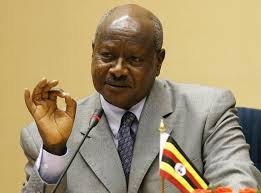In previous articles of this series, we explored the 10-point program of the National Resistance Movement (NRM). However, during a 1999 conference in Jinja, the NRM introduced an additional five development goals. In this final segment, we will focus on these added five points, which include:
Financing Public Infrastructure through Internal Borrowing and Job Creation
The NRM’s policy of financing public infrastructure through internal borrowing and fostering employment within the country has proven highly successful, creating job opportunities for both literate and illiterate citizens alike.
Since coming to power, the NRM has generated over 5.9 million jobs across various sectors. Initiatives like the Parish Development Model (PDM) and the Emyooga Program, among others, have not only created employment opportunities but also put money directly into the pockets of citizens.
The NRM also leverages internal lenders, such as the National Social Security Fund (NSSF), to minimize reliance on external borrowing and boost social and economic development.
Emphasis on Human Resource Development and Capacity Building in Technical and Service Sectors
The NRM government has prioritized human resource development and capacity building in Uganda’s technical and service sectors by emphasizing education, skills training, and the strengthening of institutions.
This includes the establishment of institutions such as the Directorate of Industrial Training (DIT) and the implementation of legislation to promote and support vocational training.
The NRM has also tackled skills gaps across various sectors by implementing targeted training programs and actively promoting Science, Technology, Engineering, and Innovation (STEI).
The NRM government has prioritized education and skills development by focusing on Technical and Vocational Education and Training (TVET) to equip Ugandans with practical, job-market-relevant skills. This includes establishing the Directorate of Industrial Training (DIT), a key institution dedicated to promoting quality standards in vocational training, curriculum development, and tailoring skills programs to meet the needs of priority industrial sectors.
These sectors include agro-based industries and knowledge-intensive industries, where the NRM is actively developing targeted training programs to address specific skills gaps.
The government has also prioritized institutional strengthening by enhancing human resource management (HRM) capacity within government ministries, with a particular focus on the Ministry of Health, to improve the management and efficiency of human resources in the health sector.
The NRM government has recognized the need to bridge skills gaps in key sectors, including energy, and has implemented initiatives like introducing specialized energy courses in tertiary institutions to enhance capacity and expertise in these fields.
The NRM government has partnered with international organizations, including the World Health Organization (WHO), to design and implement comprehensive human resource development programs.
Preservation and Development of Our Culture
The NRM has successfully preserved and promoted Uganda’s cultural heritage through initiatives like boosting cultural tourism, supporting cultural institutions, and incorporating cultural values into national development strategies.
The NRM has emphasized the role of culture in shaping national identity and fostering social cohesion by recognizing the economic potential of Uganda’s rich cultural heritage. This has been achieved through initiatives like promoting cultural tourism, encouraging visitors to experience local traditions, music, dance, and crafts, while actively supporting the preservation of these cultural assets.
The NRM has also supported cultural institutions by investing in the preservation of historical sites, museums, and cultural centers, with the goal of safeguarding both tangible and intangible cultural heritage for future generations.
The NRM has fostered the development of Uganda’s culture by creating jobs and economic opportunities, particularly in cultural industries such as handicrafts, music, and tourism.
The NRM has also led the way in promoting inclusive development, ensuring that all Ugandans, especially those in rural areas, benefit from progress while safeguarding traditional livelihoods and skills.
The NRM has also worked to integrate cultural education into the school curriculum, fostering awareness and appreciation of Uganda’s rich cultural heritage among younger generations.
Strengthening Programs that Support Gender Equality and Marginalized Groups
The NRM government in Uganda has championed gender equality and the inclusion of marginalized groups through a range of initiatives, such as affirmative action policies, increased representation in local councils, and constitutional provisions.
These efforts are designed to empower women, youth, and other vulnerable groups by enhancing their participation in decision-making and ensuring they have equal access to resources and opportunities.
The establishment of Resistance Councils, later known as Local Councils, was designed to enhance local participation in national development by ensuring inclusive representation, including that of women and marginalized groups such as the disabled.
The NRM government introduced affirmative action policies, especially for women, to boost their representation in key areas such as Resistance Councils (later Local Councils), Parliament, and education.
The NRM’s ten-point program included initiatives to enhance citizen participation in building a democratic society, with specific provisions for marginalized groups, reinforcing the party’s commitment to these principles.
Environmental Management and Protection
The NRM government has taken significant steps to protect the environment, notably through the enactment of the Environmental Act, which led to the establishment of the National Environment Management Authority (NEMA). NEMA has played a crucial role in reducing air emissions, managing hazardous waste, and improving energy efficiency.
The NRM government has strengthened environmental protection by conserving wetlands and forests, which aid in controlling soil erosion, safeguarding wildlife and fisheries such as the ban on the “Hurry-up” fishing method to protect silver fish regulating climate, and preventing air pollution.



